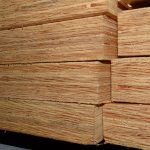The differences between solid wood and engineered wood can be understood by comparing their composition, production process, strength, applications and environmental impact. Here are the key differences between these two types of wood:
Composition and Production
- Solid Wood : This is natural wood that has been cut directly from the tree trunk. Its processing is limited to drying and grinding, which allows you to preserve the natural pattern and texture of the wood.
- Engineered Wood : Produced by combining small pieces of wood, such as chips or plywood, with resins and adhesives that bind them. This technology allows you to create large slabs or beams with stable dimensions and properties.
Strength and Stability
- Solid Wood : Has natural strength, but its shape and size may change due to moisture and temperature. Solid wood may crack or twist, which is a natural property of wood.
- Engineered Wood : Has increased dimensional stability due to its construction, making it more resistant to twisting, cracking and deformation. This is especially important in applications requiring precise dimensions.
Applications
- Solid Wood : It is often used in furniture, door and window production and in construction, especially where the aesthetics of natural wood are desired.
- Engineering Wood : Due to its stability and homogeneity, it is used in floors, furniture, load-bearing structures and where high material strength is required.
Impact on the Environment
- Solid wood : Its production is greener than some other building materials, but requires the felling of trees, which can affect deforestation and biodiversity.
- Engineered Wood : Can be produced from waste wood, reducing waste and using raw materials that would otherwise go unused. However, this production requires the use of adhesives and resins that may contain chemicals.
Cost
- Solid Wood : Typically more expensive than engineered wood due to the costs of cutting, shipping, and processing natural wood.
- Engineered Wood : Often cheaper and more affordable due to the use of waste wood and the possibility of mass production.
In summary, the choice between solid and engineered wood depends on the specific requirements of the project, including aesthetics, budget, required stability, and environmental impact. Solid wood offers natural beauty and durability, while engineered wood offers dimensional stability, strength and is often more economical.







Latest comments